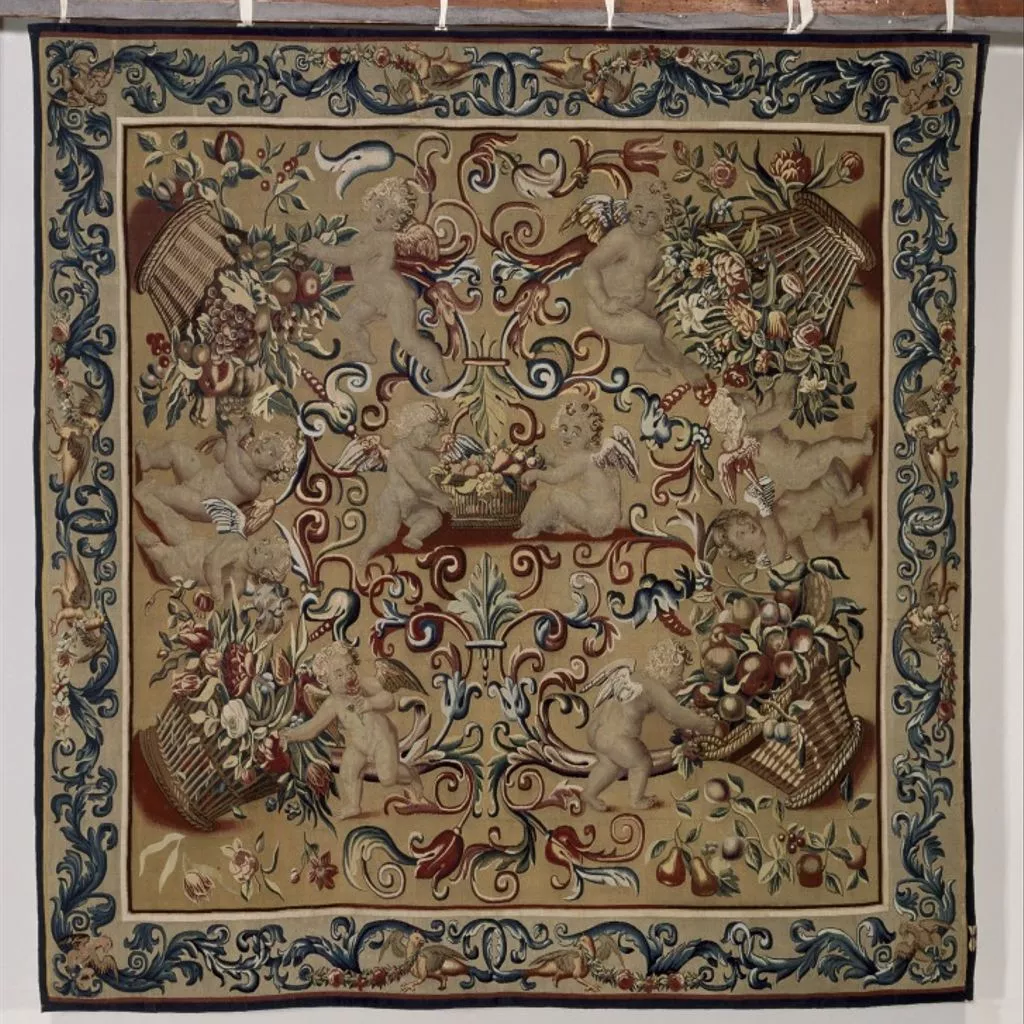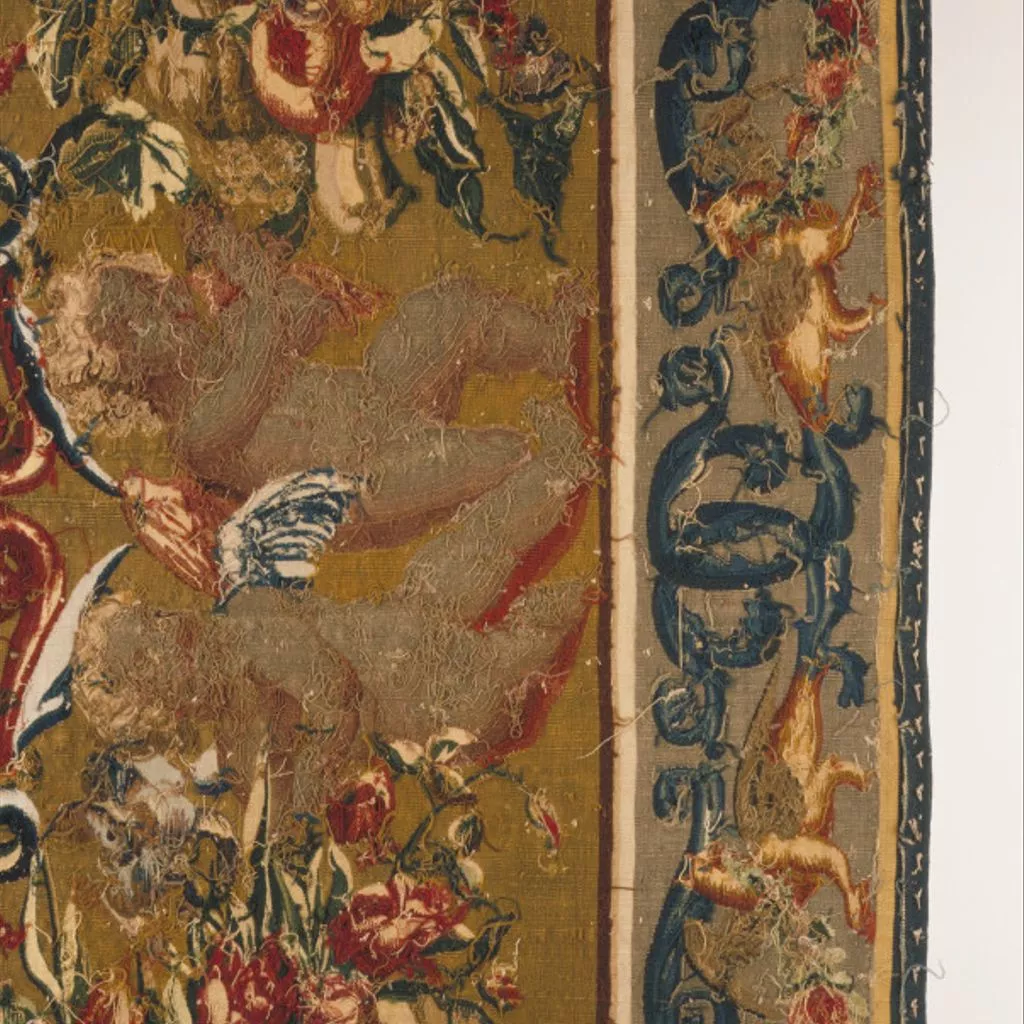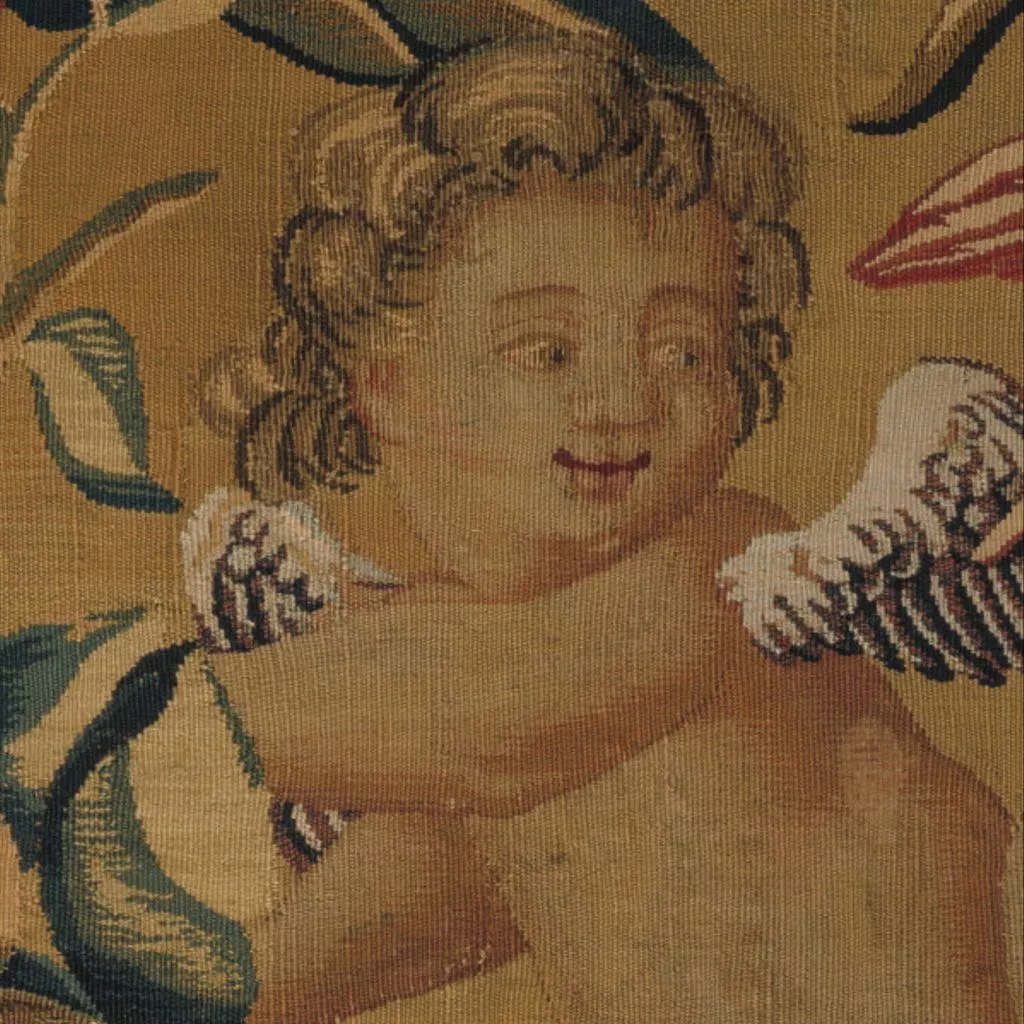1675 / 1700, Mortlake
1675 / 1700, Mortlake
- Identifier
- T.78-1982
- Carried out by
- Mortlake Tapestry Factory (http://data.silknow.org/activity/designer)
- Collection
- Technique
- Depiction
- Floral motif 72%

- Floral motif 69%

- Floral motif 48%

- Floral motif 65%

- Floral motif 74%

- Vegetal motif 59%

- Floral motif 72%
- Dimension
- 251.46 cm (height)257.5 cm (height)256.54 cm (height)250.19 cm (width)250.5 cm (width)250.19 cm (width)
- Production time
- Production place
- Type of object
Description
The unusual design of this tapestry, in particular the positions of the figures, suggesting two side flaps, and the directional effects of the shadows, makes it probable that it was designed as a sumpter cloth. Sumpter cloths were used to cover bales of goods moved by packhorses, in the case of wealthy property owners between their houses. The cloths were often richly embroidered or made of tapestry, sometimes with their owner's arms. When not in use on journeys they could be hung as decorative wall hangings.
Place
This tapestry may have come from Drayton House in Northamptonshire. Drayton had a set listed in an inventory drawn up under Sir John Germaine (died 1718), described as 'four pieces of tapestry gold colour'd hangings with boys and flowers', in a drawing room.
Design & Designing
The border design here is a simplified version of a wider border with coats of arms on a set of tapestries made for Ralph Montagu, later Earl of Montagu, between 1673 and 1684. During that period Montagu owned the premises of the Mortlake workshop, where those tapestries are likely to have been made. The design for the border would have been kept in the workshop, available to be copied for this sumpter cloth.










